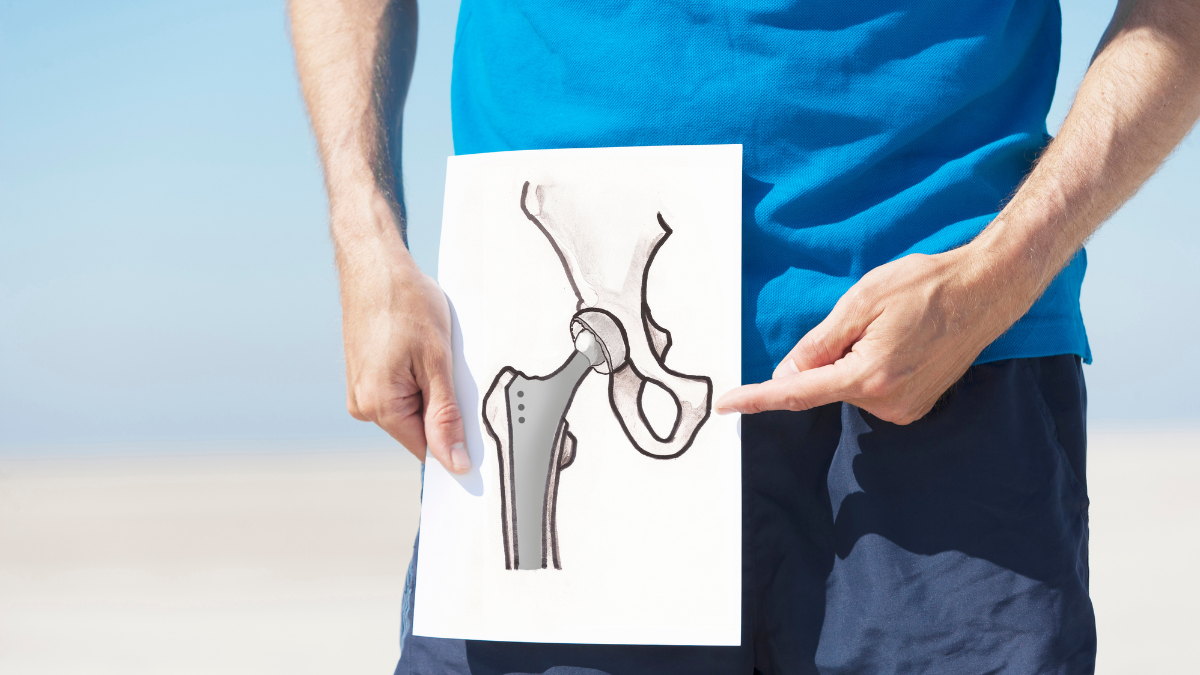- Open Time 24 hour
- Call: +91 86960-97555
- Email: info@roboticsbydrkhatri.com

Reasons for knee replacement surgery
Knee replacement surgery should be considered when all conservative measures fail to provide relief. Surgery may be performed for the following reasons:
- Relieve pain
- Improve joint stability
- Improve alignment and correct bone deformity
- Maximise quality of life
- Optimise activities of daily living

Total knee replacement
Total knee replacement is one of the most common surgical procedures performed in all of medicine; there are over 50,000 performed every year in Australia and New Zealand.
More than 90% of people who undergo total knee replacement experience dramatic relief in knee pain and are better able to perform common activities.
Total knee replacement removes and replaces the damaged knee surface with an implant. A total knee implant is made up of three parts: a metal femoral component (thighbone), a metal tibial component (shinbone), and a plastic spacer that is placed in between. A fourth component made of plastic is sometimes used to cover the back of the patella (knee cap).
Total knee replacement with Robotic Surgical System
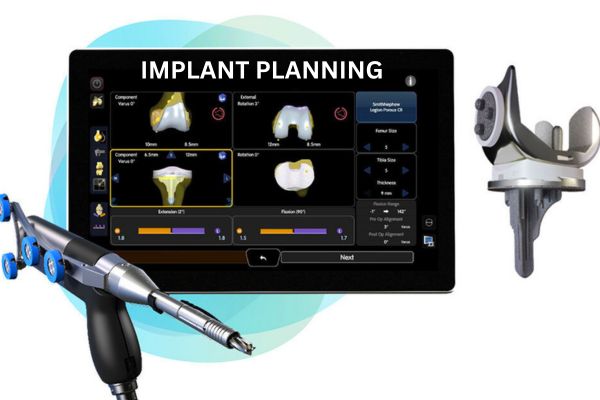
Increased Accuracy through Advanced Imaging Techniques
The cornerstone of the Robotic Knee Replacement lies in its ability to utilize advanced imaging techniques to create a 3D model of the patient’s knee. This cutting-edge technology enables surgeons to make the most precise measurements and cuts, resulting in superior placement of the artificial knee joint. As a consequence, patients experience a more natural feel post-surgery, reducing discomfort and improving overall functionality.
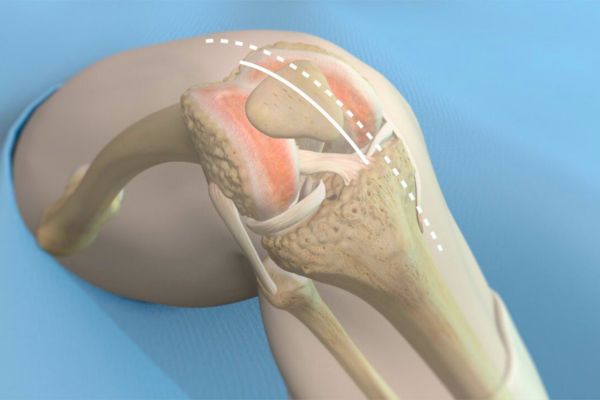
Enhanced Safety and Minimized Risk of Complications
The precision and accuracy of the Robotic Knee Replacement significantly reduce the risk of errors and complications during surgery. Knee replacement surgeons can make smaller incisions due to the high level of accuracy, which minimizes trauma to the surrounding tissues. As a result, patients experience less pain and a faster recovery process compared to traditional knee replacement surgeries.
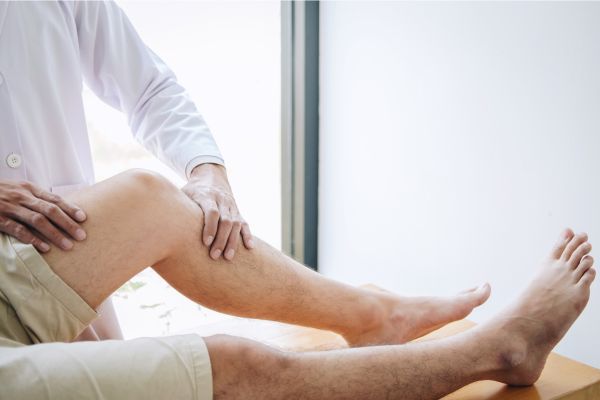
Faster Recovery and Improved Postoperative Rehabilitation
The minimally invasive nature of the Robotic Knee Replacement translates to a swifter recovery period. Patients often report reduced postoperative pain and an enhanced ability to resume normal activities sooner compared to traditional knee replacement surgery in Jaipur. The faster recovery enables patients to regain their independence and enjoy an improved quality of life in a shorter timeframe.
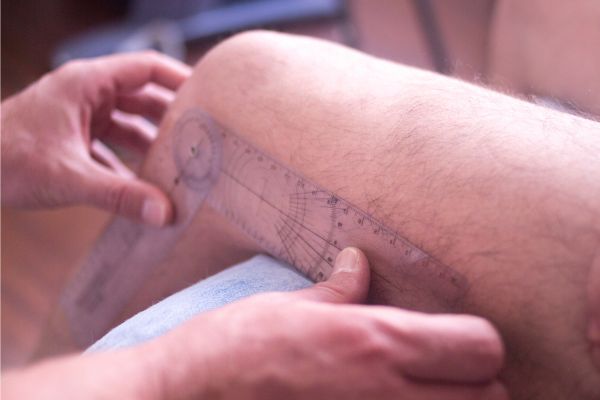
Long-Term Results and Enhanced Mobility
Numerous studies have demonstrated the long-term success of the Robotic Knee Replacement. Patients who undergo this innovative procedure often experience greater mobility and improved quality of life for many years following surgery. This longevity of positive outcomes highlights the durability and efficacy of the Robotic Knee Replacement as a reliable solution for patients seeking knee replacement surgery.

Personalized Approach for Optimal Fittings
Every patient’s knee is unique, with distinct variations in size and shape. The Robotic Knee Replacement offers a highly personalized approach, ensuring that the fitting and placement of the artificial knee joint are tailored to each patient’s specific needs. This level of customization leads to a better fit, greater comfort, and improved mobility for the patient, ultimately contributing to a better quality of life after the procedure.
Preparation for surgery
There are several activities that you should plan for once you decide to have surgery:
Initial surgical consultation: Preoperative x-rays, complete past medical history, complete past surgical history, complete list of all medications and allergies (prescription, over-the-counter, vitamin supplements).
Complete physical examination: Your knee replacement doctors may determine if you are in the best possible condition to undergo surgery.
Blood donation: A transfusion may be necessary after surgery, therefore you may wish to donate blood prior to surgery.
Physiotherapy: Instruction in an exercise program to begin prior to surgery and an overview of the rehabilitation process after surgery will better prepare you for post-operative care.
Using computer assistance, the unique shape and motion of your knee are collected by the surgeon. This allows for a three-dimensional model of your knee to be generated and used by the surgeon to plan the procedure. Proper implant size and position will be determined at this time.
Once your surgeon virtually determines the correct implant size and positioning, a handheld robotics- assisted tool is used to accurately position bone removal cut guides.
These cut guides enable the surgeon to use a surgical saw to remove your damaged knee bone, making room for the implant. The extra layer of precision provided by the robotic system is designed to enable accurate cut guide placement.

Download Discharge Instructions
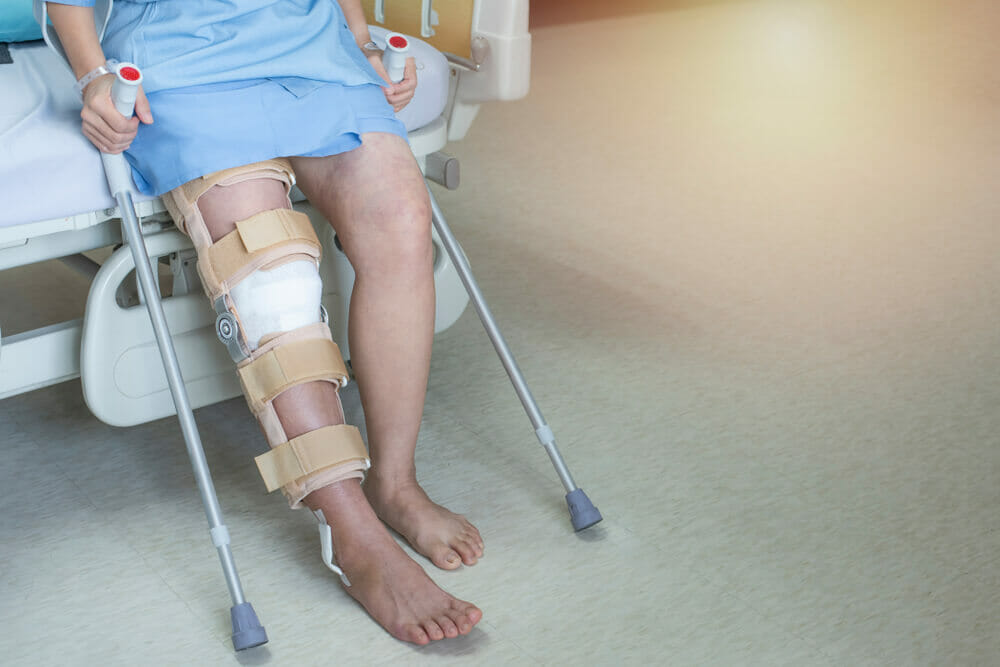
Postoperative
Immediately after surgery you will be monitored as you awake from anaesthetic. Once awake,
you will be taken to your hospital room. Plan to stay in the hospital for several days.
In addition to the incision along your knee there will be two small incisions on both your
thigh and lower leg where the tracker pins were placed. Expect to feel some pain. This is a natural part of the
healing process. Your knee replacement doctors and nurses will work to reduce your pain.
Most patients begin exercising their knee the day after surgery, although each patient’s
postoperative care will vary. A physiotherapist will prescribe exercises to help restore knee strength and function,
and increase range of motion in your knee. It is common to experience swelling, stiffness and tightness at this
time.

Rehabilitation following surgery
The success of your surgery will largely depend on how well you follow your surgeon’s instructions the first few weeks following surgery. How quickly you recover depends on factors such as knee pain, flexibility, strength and balance. Follow up visits will likely be scheduled to check up on your condition and progress as you recover.
In order for you to meet the goals of knee replacement surgery, you must take ownership of the rehab process and work diligently on your own as well as with your physiotherapist. The rehabilitation process can be quite painful at times. However, if you commit to following your program and overcome the challenges in rehab, you will succeed in meeting the goals you set when deciding on surgery.
Dr S.S Khatri, Senior Consultant Orthopaedics, Joint Replacement & Robotic surgery,Vaishali Nagar, jaipur debunks some of the common myths about robotic knee replacement surgery as well as addresses common concerns patients have after the surgery.
Expert Knee Replacement Surgery in Jaipur – Dr. S.S. Khatri
When it comes to knee replacement surgery in Jaipur, Dr. S.S. Khatri stands out as a trusted name. With over 15 years of experience and a remarkable record of 10,000+ successful joint surgeries, he combines expertise with compassionate care to ensure the best outcomes for his patients.
If you’re struggling with chronic knee pain or stiffness, don’t let it hold you back. Consult Dr. S.S. Khatri, a renowned knee replacement surgeon in Jaipur, to take the first step toward a pain-free, active life.
Top-Rated Knee Replacement Surgeon Providing Expert Care Across Rajasthan and Nearby Cities
Dr. S.S. Khatri, a highly trusted knee replacement surgeon, offers advanced robotic knee replacement surgery in Vaishali Nagar, Jaipur. Known for his expertise, he is recognized as the best knee replacement doctor not only in Jaipur but also in cities like Ajmer, Jodhpur, Kota, Barmer, Jaisalmer, Alwar, Surat and Kolkata. Patients from these cities choose him for his advanced treatments and care. With excellent reviews and a strong reputation, Dr. Khatri is one of the best-reviewed knee replacement surgeons in India, providing top-quality knee joint care to all his patients.
Benefits of robotic knee replacement for advanced arthritis
The advantages of robotic knee replacement surgery are significant:
Reduced post-surgery pain
Increased accuracy
Reduced complications
Improved long-term functionality
Enhanced patient satisfaction
Get Best & Affordable Treatment.
Get In Touch In The Mean Time.
Please contact us on the below mentioned number so as to help you fix your appointment. Kindly bring your X rays if you have.
We are there for your emergency related to orthopedic condition and you may call us 24 x 7 on +91 86960-97555.
Mangalam Plus Medicity Hospital, Shipra Path,Mansarovar, Jaipur.
7 A Nemi Nagar Extension, Vaishali nagar, Jaipur 302021, Rajasthan
Get an Appointment
Read Our Latest News & Articles
Find out what’s new and get updates on treatments, procedures, incredible patient stories, and special cases in our blog section.






